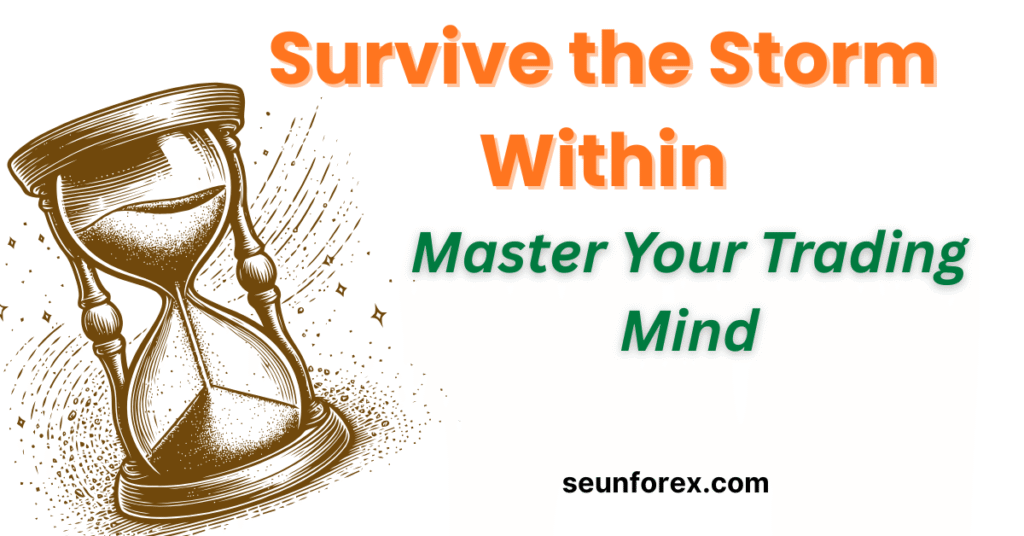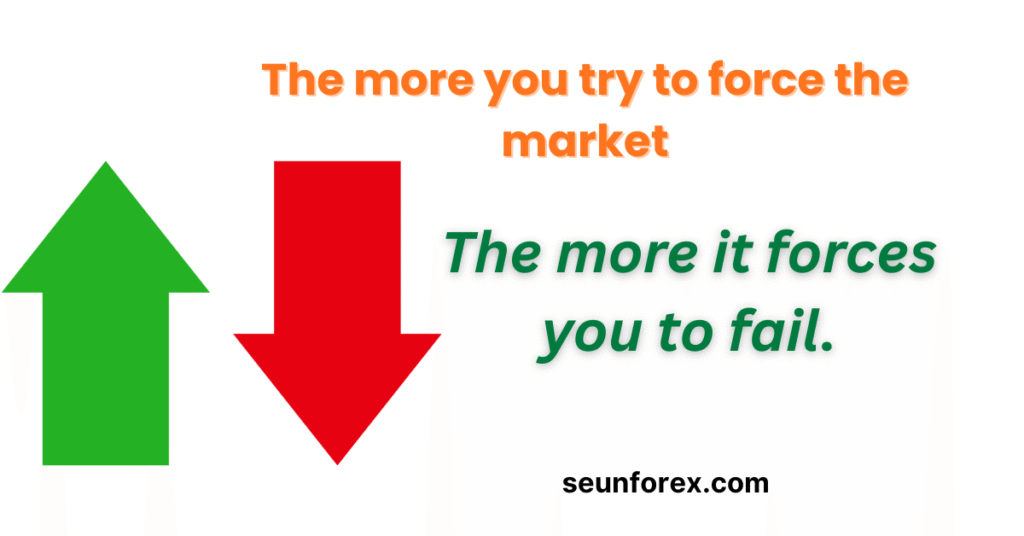
Introduction: Why Drawdowns Break Most Traders
Handling drawdowns is one of the toughest tests in trading. Every trader eventually faces it — the gut-wrenching moment when your account curve drops and confidence fades.
Drawdowns aren’t just about losing money; they reveal your trading psychology, test your trading discipline, and challenge your trader mindset. Many traders fail not because their system is weak but because they don’t know how to handle drawdowns without emotional breakdowns.
If you can stay calm and focused during a drawdown, you can survive any market storm. This guide will show you practical steps for handling drawdowns like a professional — with patience, structure, and long-term confidence.
Understanding Drawdowns (and Why They Hurt So Much)
A drawdown is simply a period when your trading equity declines from its peak. Every trader experiences it. The key is how deep it goes, how long it lasts, and how you respond.
But the emotional pain of a drawdown is often greater than the financial one. It hits your confidence, makes you doubt your edge, and can tempt you to abandon a system that’s still statistically sound.
The truth is, drawdowns are not the problem. Your reaction to them is.
When handled poorly, drawdowns spiral into overtrading, revenge trades, and blown accounts. When handled properly, they become stepping stones — data-driven feedback loops that refine your edge and harden your mindset.
The Psychology Behind a Drawdown
When you lose, your brain interprets it as a threat. The amygdala, the part responsible for emotional reactions, triggers a fight-or-flight response. Adrenaline rises, rationality drops, and you start seeing the market as an enemy rather than a neutral environment.
This is why traders often make their worst decisions during drawdowns. The emotional brain hijacks the logical brain. Instead of following your plan, you start improvising — changing risk, abandoning setups, or jumping between strategies.
Understanding this is the first step to mastering it.
Your goal as a trader is not to eliminate emotion but to regulate it. You can’t stop fear from showing up — but you can stop it from making trading decisions for you.
Common Emotional Mistakes During Drawdowns
Even experienced traders fall into predictable traps when facing losses. Recognizing them early can save your account.
1. Revenge Trading
You try to win back losses immediately. You double your position, trade impulsively, and break all your rules. This rarely ends well.
2. Over-Optimization
You start tweaking your system mid-drawdown. You change timeframes, indicators, or strategies out of fear rather than logic.
3. Abandoning Discipline
You stop journaling, skip analysis, and start hoping instead of planning. You go from strategy-driven to emotionally reactive.
4. Self-Blame
You start believing you’re the problem. You forget that even great systems go through losing streaks.
5. Unrealistic Expectations
You assume every month should be profitable. But markets rotate — and no edge wins all the time.
The key is to expect drawdowns. When you plan for them, they stop feeling like failure and start feeling like part of the process.
How to Build Emotional Resilience
Resilience is your shield against the psychological storm of trading drawdowns. It’s the skill of staying calm when things go wrong.
1. Normalize Losses
Accept that losses are part of trading. Even professional traders lose 40% to 60% of the time. Winning is about probability, not perfection.
2. Use Data to Stay Grounded
Keep a trading journal. When your mind starts spiraling, look at the numbers. Are your trades still within expected drawdown limits? If yes, you’re fine.
3. Separate Identity from Performance
A losing trade doesn’t make you a losing trader. Detach your self-worth from your profit curve.
4. Build a Recovery Routine
During drawdowns, your goal is not to make back losses — it’s to regain control. Sleep well, exercise, meditate, and take short breaks from charts.
5. Focus on Process, Not Outcome
Replace the obsession with “winning” with a focus on executing your plan flawlessly. Process-driven traders recover faster.
The Science of Stress: What Happens in Your Brain

When you’re in drawdown, your body behaves as if you’re in danger. Cortisol levels rise. Your prefrontal cortex — the part of your brain that manages logic and decision-making — starts shutting down.
That’s why you chase losses, ignore stop-losses, or hesitate to take valid setups. Your nervous system is stuck in survival mode.
To handle drawdowns, you must regulate your nervous system. Techniques like breathing exercises, journaling, and mindfulness reset your physiology so logic can return.
This isn’t self-help fluff. It’s neuroscience. Calm traders make better risk decisions because their brains function at optimal capacity.
Step-by-Step Plan to Handle Drawdowns Gracefully
When your account starts dropping, follow this structured recovery protocol.
Step 1: Stop Trading for 24 Hours
Pause. Don’t trade when emotional. Reflection beats reaction.
Step 2: Assess the Situation
Ask: Is this drawdown caused by bad execution or normal variance? Review your last 20 trades objectively.
Step 3: Reconnect with Your Edge
Look at your journal stats. What setups used to work? Are you still following them?
Step 4: Reduce Risk
Cut position size in half until confidence returns. The goal is to protect capital, not chase recovery.
Step 5: Review Market Conditions
Sometimes, your strategy struggles because the market regime changed. Sideways markets can hurt trend traders; volatile markets can hurt mean-reversion setups.
Step 6: Focus on One Perfect Trade
Once calm, take one small, high-quality trade. Win or lose, it rebuilds discipline.
Step 7: Reassess Monthly
If the drawdown extends beyond your comfort zone (say 10–15%), step back longer. Rebuild your plan, then return with fresh perspective.
The Recovery Phase: Rebuilding Confidence After Losses
Confidence is not built by winning. It’s rebuilt by trusting your process again after losing.
Start small. Trade with reduced size and focus on perfect execution. Track everything. Each disciplined trade rebuilds neural confidence.
If you made emotional mistakes, don’t hide from them — study them. Write down what triggered them and how you’ll respond next time.
Recovery is not about revenge. It’s about recalibration.
Developing a Trader’s Growth Mindset
Drawdowns test whether you have a fixed or growth mindset.
- A fixed mindset says, “I failed, so I’m not good at trading.”
- A growth mindset says, “I failed, so I just discovered something to improve.”
When you view drawdowns as feedback, not punishment, you start evolving.
Every trader’s growth curve includes setbacks. The difference between amateurs and pros is how they interpret them.
A losing streak doesn’t define your future. It defines your next lesson.
Preventive Systems to Minimize Future Drawdowns
You can’t eliminate drawdowns, but you can limit their damage with smart systems.
1. Risk Per Trade
Never risk more than 1% of capital on a single trade. This ensures no single loss can ruin you.
2. Daily Loss Limits
Set a maximum daily drawdown (like 2–3%). Once hit, stop trading for the day.
3. Diversify Setups
Trade multiple uncorrelated setups to smooth equity curves.
4. Regular Review
Once per week, review your equity curve, risk, and emotional state. Journaling is not optional — it’s your trading compass.
5. Maintain Lifestyle Balance
Sleep, nutrition, and exercise directly impact trading decisions. A healthy body supports a disciplined mind.
Lessons from Legendary Traders on Surviving the Storm
Every legendary trader has faced brutal drawdowns — and learned from them.
According to Investopedia’s guide on drawdowns, a drawdown simply measures how much an investment or trading account declines from its peak before recovering. But in practice, it’s far more than numbers — it’s a mental and emotional test that separates amateurs from professionals.
Paul Tudor Jones once said, “Don’t focus on making money; focus on protecting what you have.”
William O’Neil taught traders to expect a 20% drawdown as part of normal cycles.
Mark Minervini emphasizes mental capital — the ability to stay confident even when trades go wrong.
Jesse Livermore lost fortunes multiple times, yet his lessons on emotional discipline still shape modern trading psychology.
Their message is timeless: drawdowns are not permanent — but your reaction can be.
If you want to strengthen your emotional control during tough times, read my complete guide on building patience and discipline in trading. It breaks down how patient traders recover faster, make clearer decisions, and develop the composure needed to bounce back stronger after losses.owns are not permanent — but your reaction can be.
Final Thoughts: Turning Drawdowns Into Growth
Handling drawdowns is not about avoiding pain — it’s about transforming pain into precision.
Every dip in your equity curve carries a hidden lesson. Each setback can sharpen your edge if you remain disciplined enough to study it.
Remember this truth: every great trader you admire survived multiple drawdowns before becoming consistent. They didn’t quit. They didn’t panic. They learned.
Handle drawdowns wisely, and you’ll not only survive — you’ll evolve.